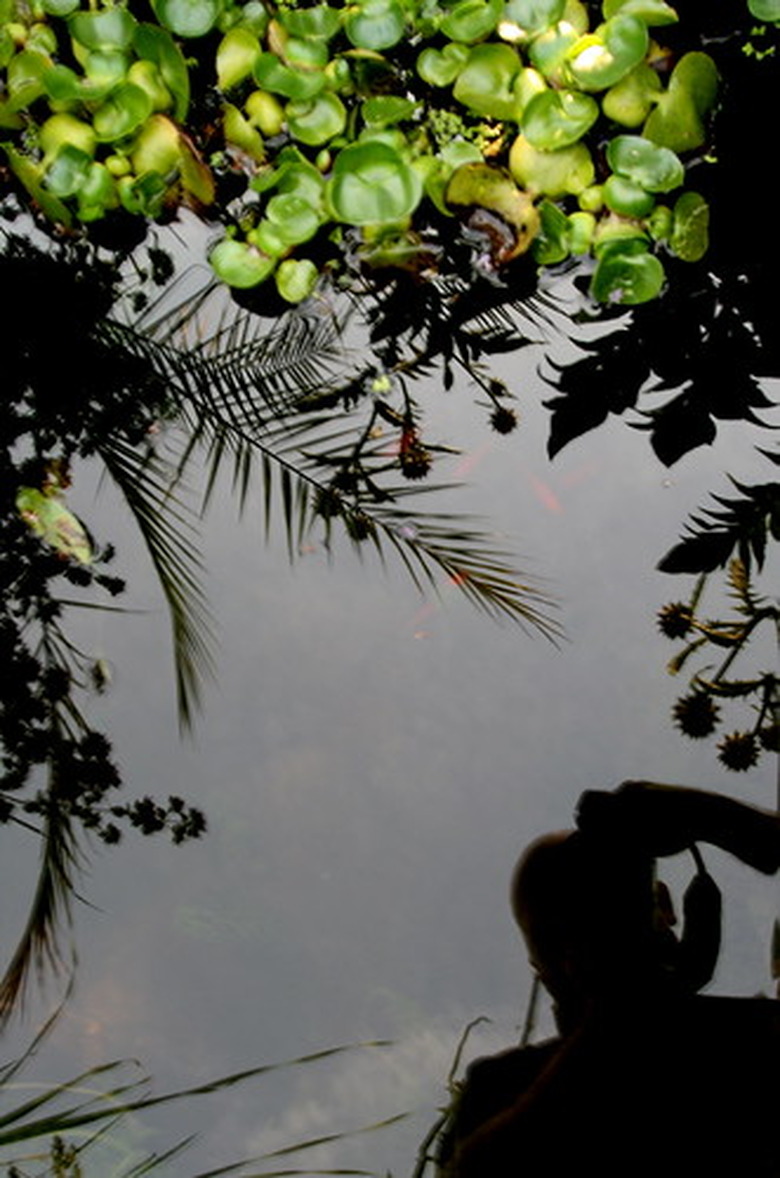Use Of Water Hyacinth As Fertilizer
Water hyacinth, scientific name Eichornia crassipes, is an invasive aquatic that thrives in tropical and subtropical areas where it has become a major pest. Many cool-climate gardeners grow it as an annual in garden ponds and tub-water gardens. Getting it to grow successfully usually isn't a problem. But eradicating it or getting rid of extra plants usually is.
The Problem
Water hyacinth has invaded many tropical and subtropical bodies of water. It chokes out native plant life and collapses the local aquatic ecosystem. It is also clogs shipping lanes in lakes and rivers and requires costly and frequent manual removal. It grows so fast that one plant can produce 248 offspring every 90 days in ideal conditions. It's primary mode of reproduction is by natural division. It also reproduces by seeds, which can remain viable up to 20 years and remain wet or dry.
- Water hyacinth, scientific name Eichornia crassipes, is an invasive aquatic that thrives in tropical and subtropical areas where it has become a major pest.
Biofuel
Scientists are studying the potential of using water hyacinth as biomass for harvesting biofuel. The plants already are abundant and are being removed and disposed of anyway. Studies show that water hyacinth might have more potential than most invasive aquatics that have been studied for biofuel use. The byproduct of the biofuel process is a slurry that can be composted and used as a soil conditioner on farm crops. This is taking place in poor rural areas of Africa and Southeast Asia.
Composting
When water hyacinth is removed from a body of water, it can be dried out and mixed with other ingredients to make a rich compost. Usually, the mix is one part dry water hyacinth, one part animal manure and one part filler such as wood chips, ashes or poor-quality soil. The compost pile is left to sterilize the bacteria and seeds for about three months and is turned regularly before being applied to farm crops.
- Scientists are studying the potential of using water hyacinth as biomass for harvesting biofuel.
- The compost pile is left to sterilize the bacteria and seeds for about three months and is turned regularly before being applied to farm crops.
Soil Conditioning
Compost made from water hyacinth should be spread evenly across a garden and tilled into the soil when preparing for spring planting. Water hyacinth has a high nitrogen content, higher than many other plants, which will aid vegetative growth for gardens. A strong, vigorously growing garden plant produces more and has better quality fruit and vegetables.
Mulch
Water hyacinth compost can also be used for mulching trees and shrubs during the fall and winter. Mulching helps protect fragile roots from harmful freezes. Mulch should be applied in an even layer about 2 to 3 inches thick around the base of a tree or shrub. In spring, rake away the mulch and use it in the garden or flowerbeds as a natural fertilizer.
- Compost made from water hyacinth should be spread evenly across a garden and tilled into the soil when preparing for spring planting.
- Water hyacinth compost can also be used for mulching trees and shrubs during the fall and winter.
